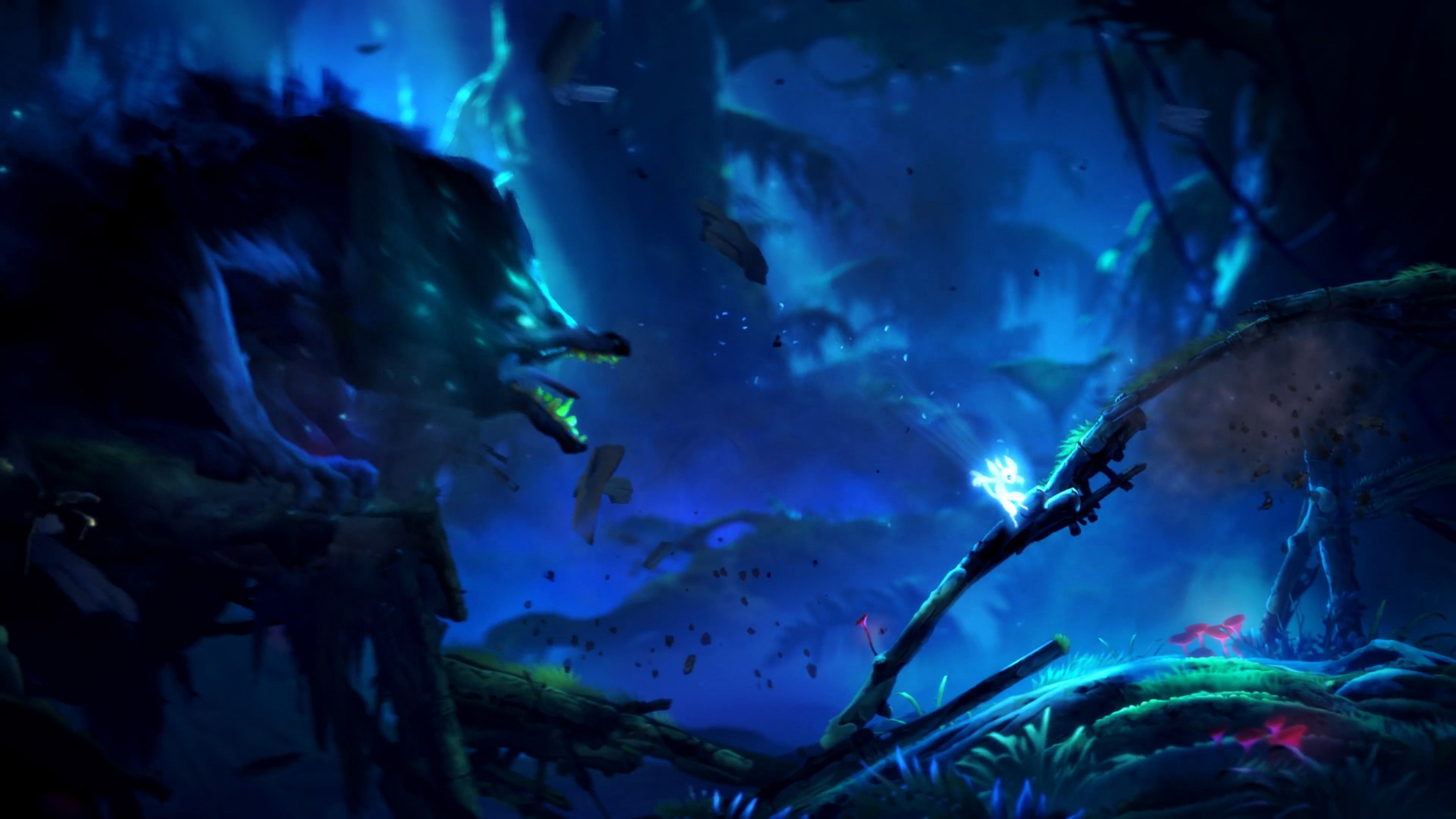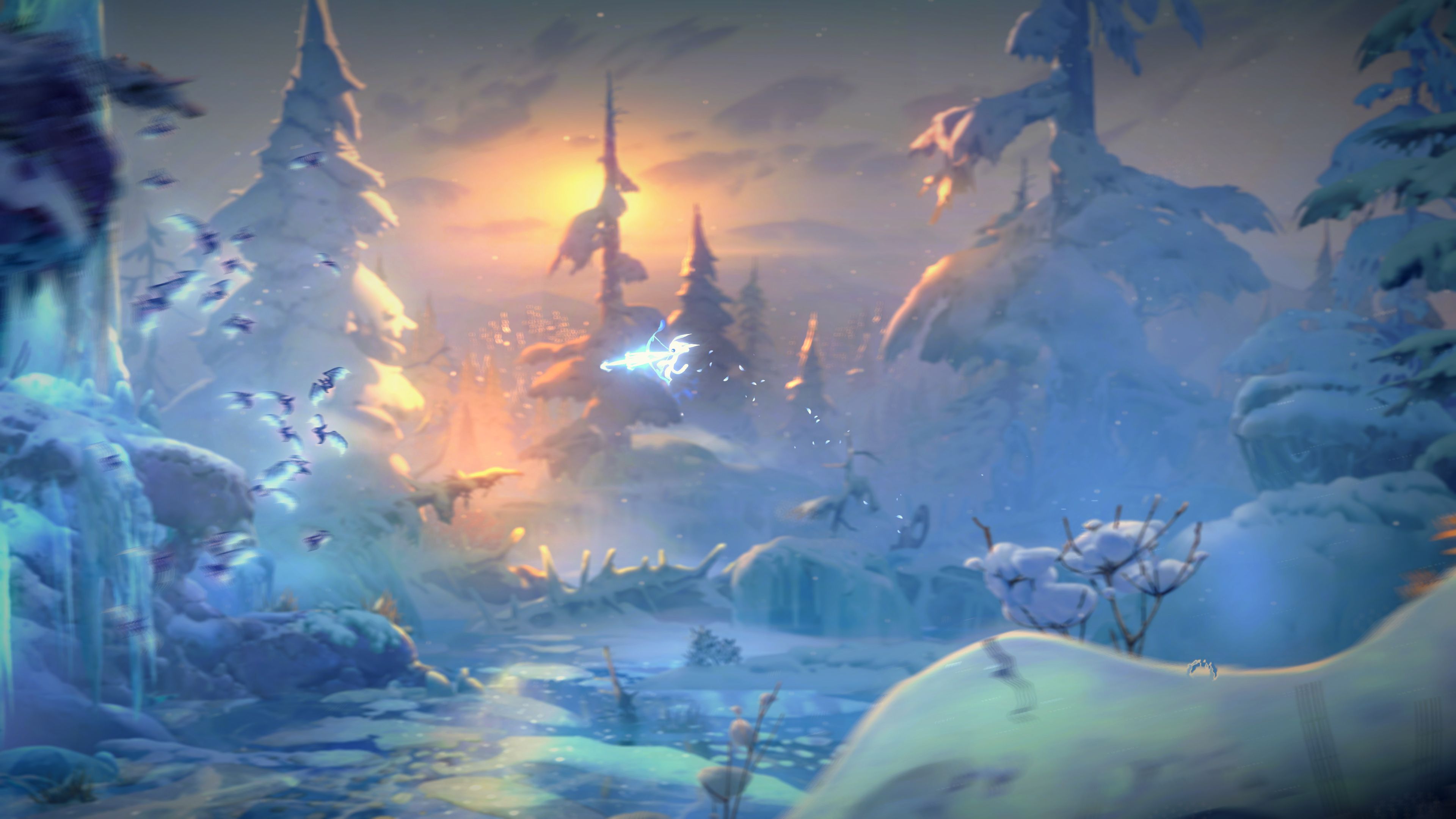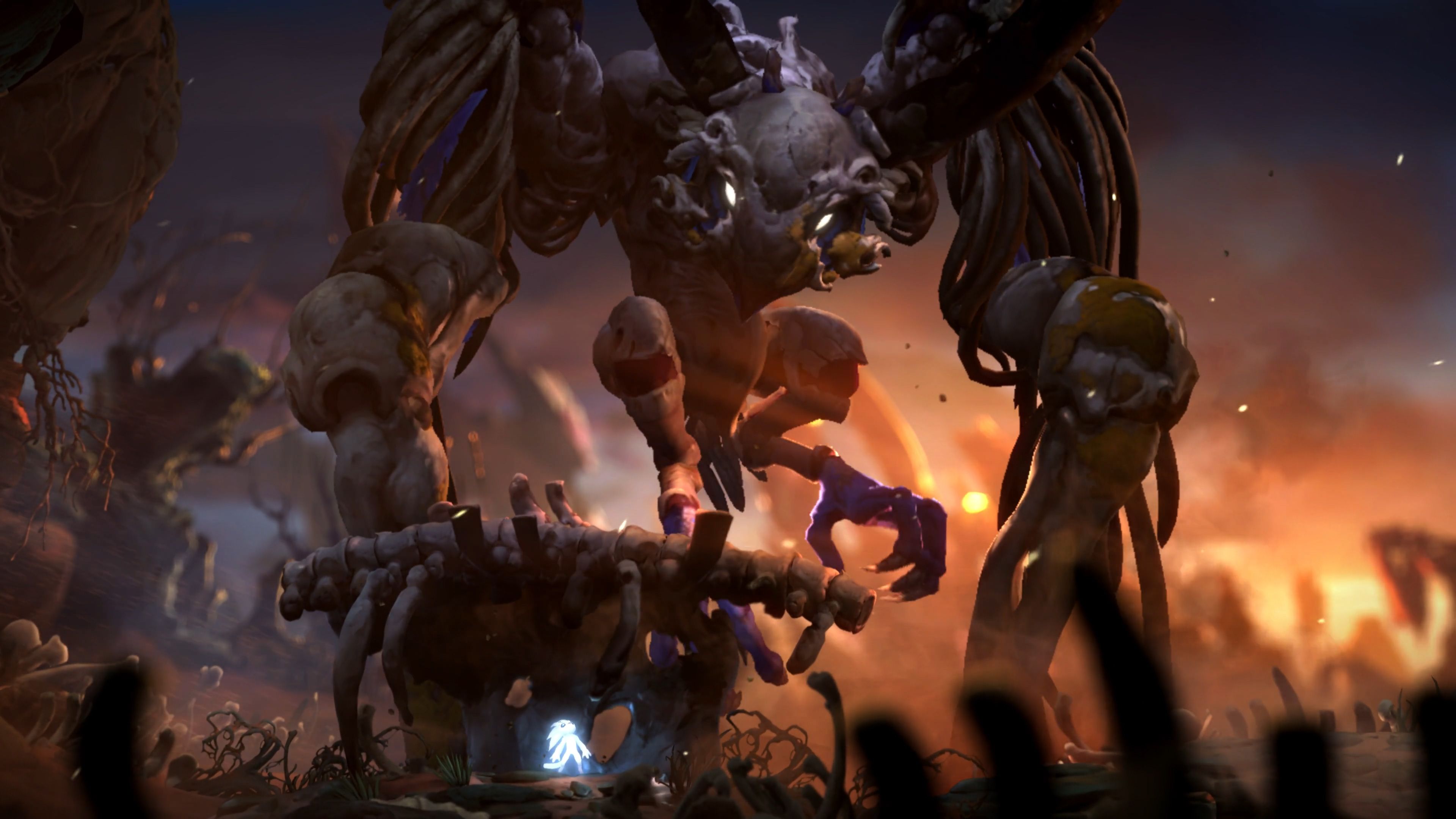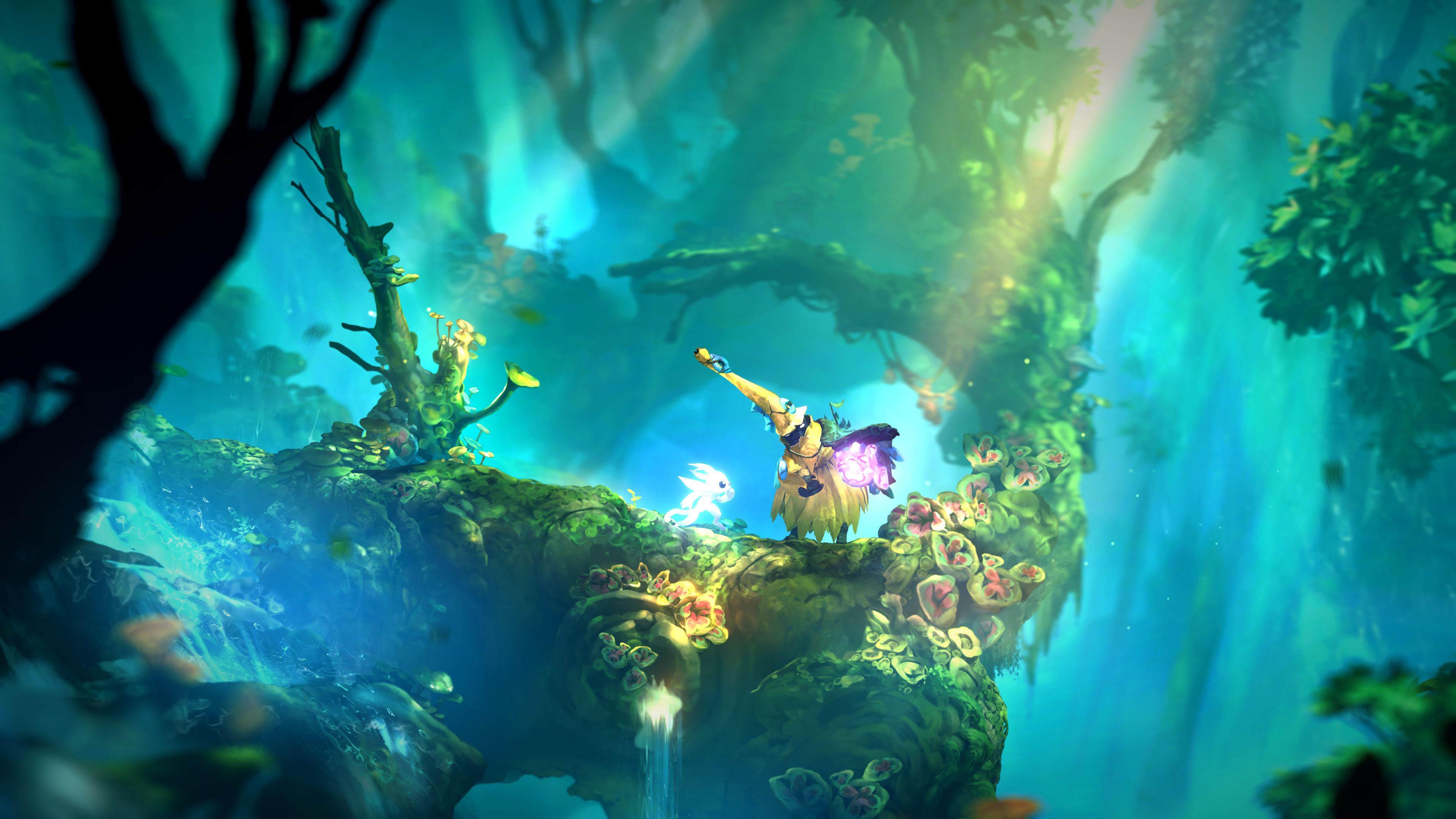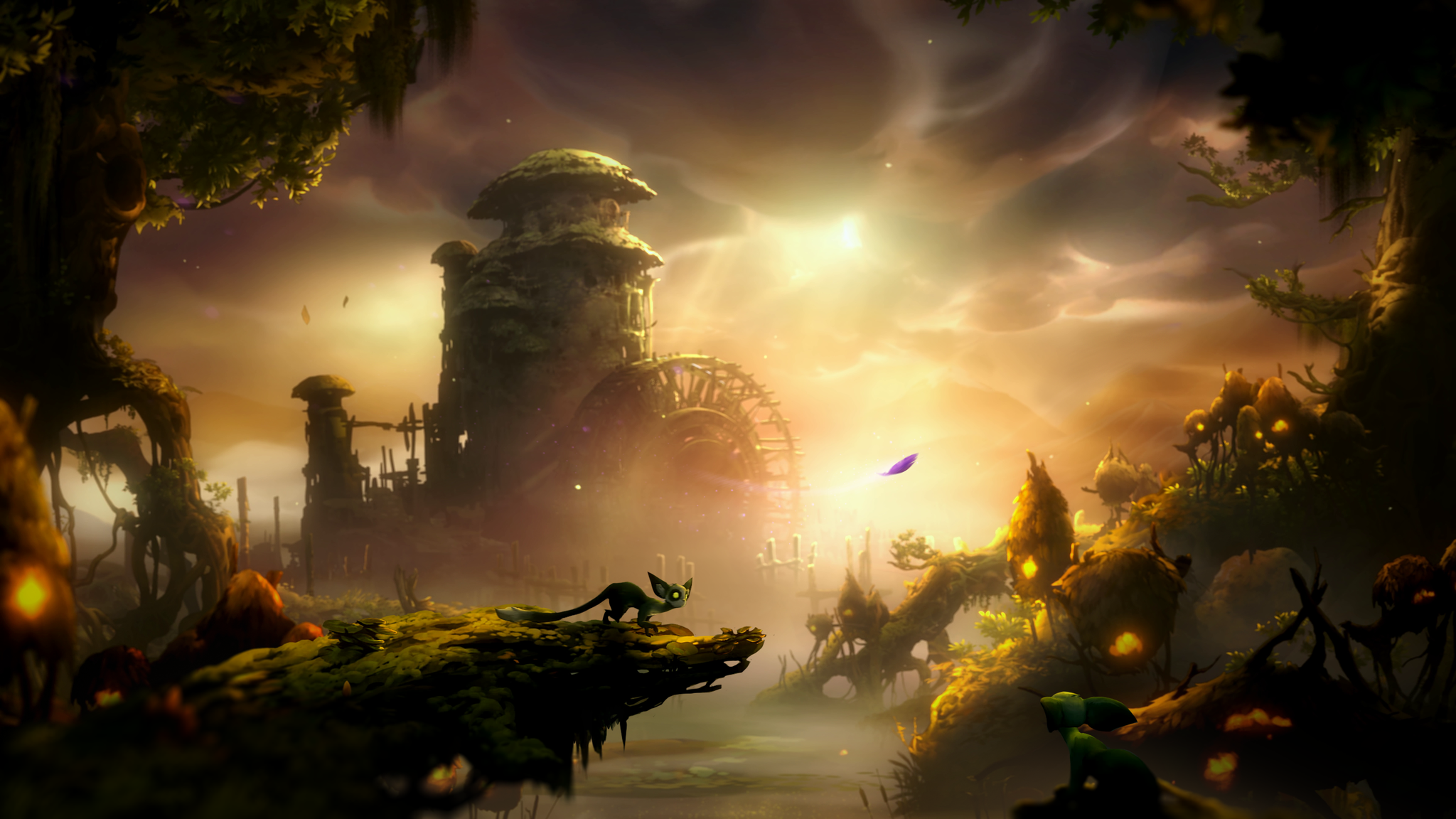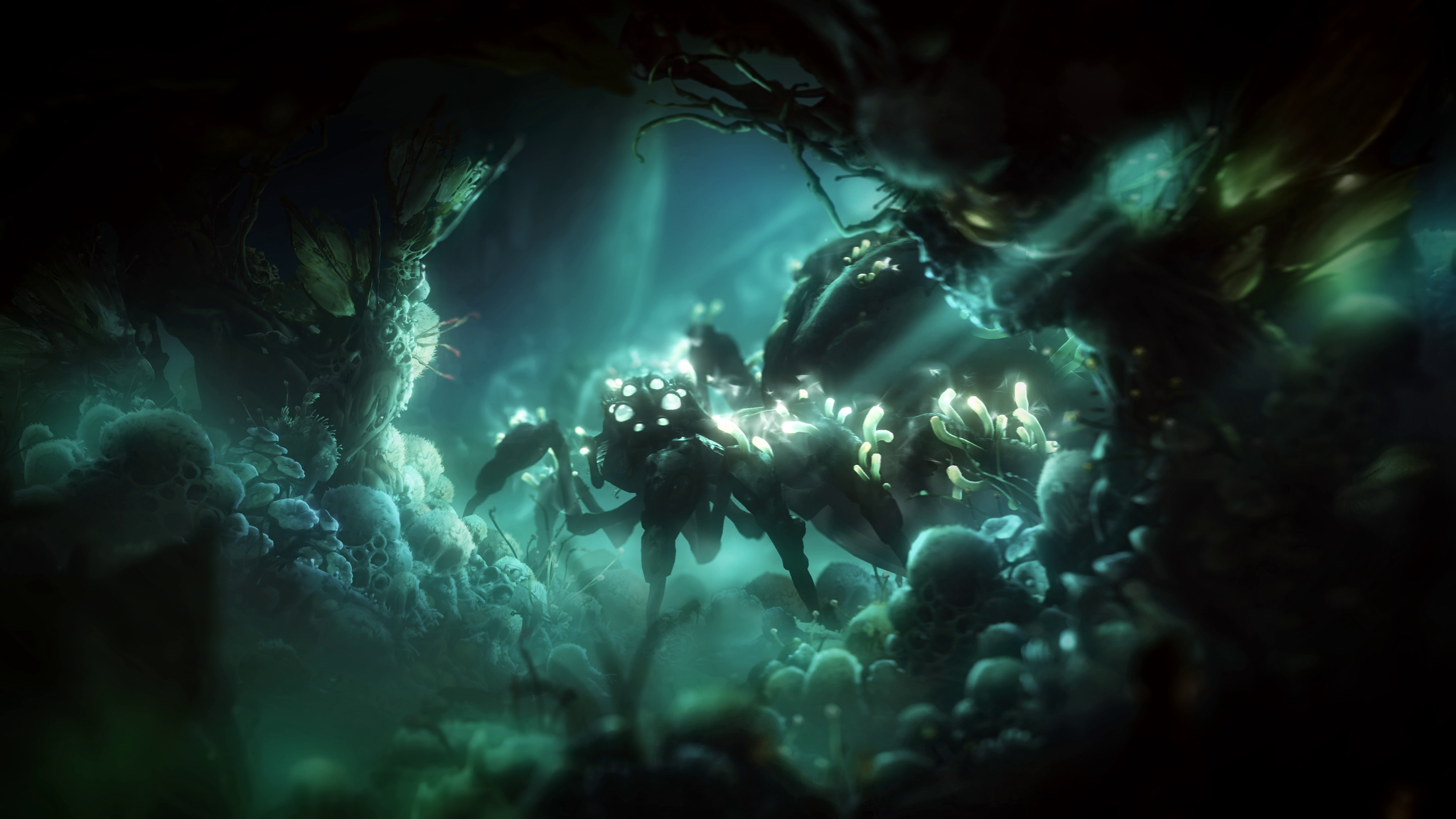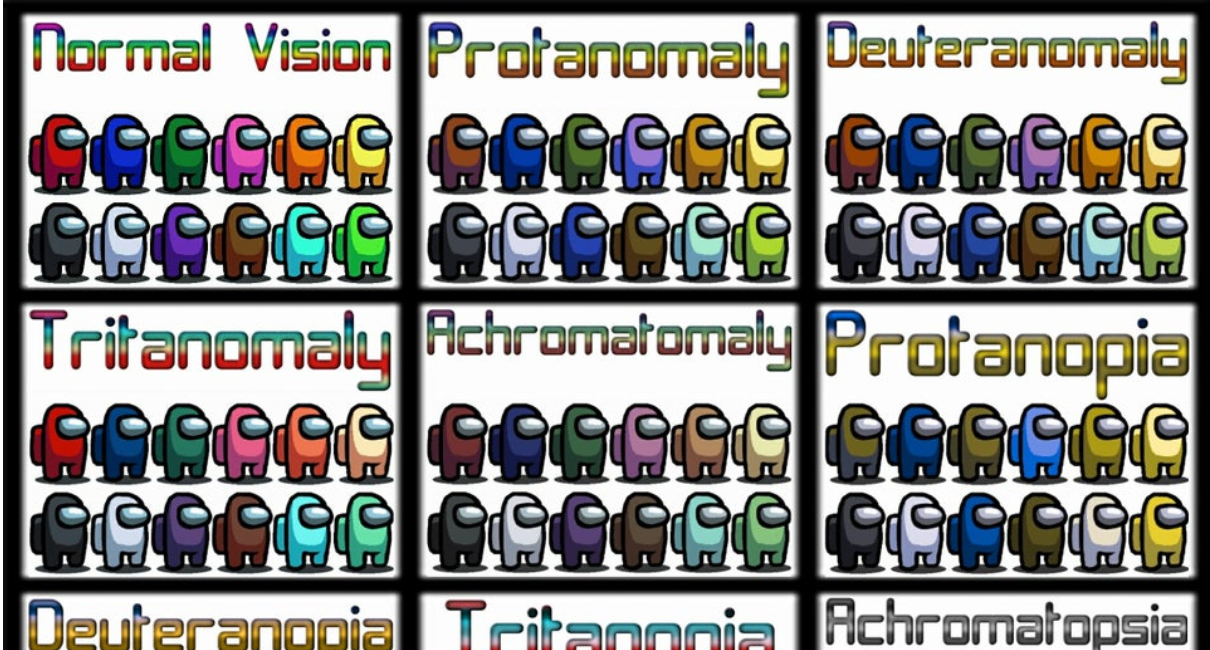Ori and the Will of the Wisps, the dreamy follow-up to 2015’s revered Ori and the Blind Forest, launched earlier this year to unanimous acclaim. Those who weren’t initially able to platform their way across its gorgeous groves and grottos on PC or Xbox One were recently afforded the opportunity to do so with the Nintendo Switch version, making the wonderful world of Ori more accessible to millions of people worldwide.
As a means of discussing the recent Switch launch, I sat down with Will of the Wisps lead artist Daniel van Leeuwen and art director Jeremy Gritton to talk about all things Ori, including its beautifully distinct art style, cut content, and… Ori in Smash?
From the get-go, a daunting degree of ambition loomed large over Ori and the Will of the Wisps. Blind Forest had enraptured audiences all over the world when it launched in 2015, and developing a sequel to a near universally beloved property is no easy task. To make matters even more complex, Will of the Wisps was placed in the capable but green hands of a whole new department.
“Blind Forest was developed with a different art team, and I know that they were heavily inspired by Studio Ghibli,” Gritton tells me. “For us, a lot of it was about studying their work and what they had done previously to understand it, and then finding our own ways to expand on that.”
“For Will of the Wisps we didn’t use that much reference from Ghibli at all,” van Leeuwen adds. “Blind Forest was the main reference, and all the new artists brought their own styles. It’s mixed into this new hybrid that [became] Will of the Wisps.”
Now, seven months after launch, we can easily see that the response to Will of the Wisps has been unanimously positive. It’s regularly present on early game of the year lists, and a lot of people — despite believing it was impossible — have gradually started to admit that it succeeded in superseding its predecessor. That kind of praise obviously isn’t visible during development.
“There’s some inherent pressure just because it’s a sequel,” Gritton says. “It’s an established look that was really well received, so obviously we don’t want to stray too far from that. At the same time, it was important for us to find ways to do our own thing. If we tried to replicate what was done before it would always be an imitation. We were trying to find that sweet spot where we’re close enough that it feels like Ori, but it has its own look so when people play, they’ll immediately notice a difference.”
“It was also pretty daunting because Blind Forest was so well received and those guys worked with way less resources than we had, [which] they used to their strength,” van Leeuwen says. “[It] looks a bit simpler, more like a coloring book, but everything is much more static. We tried to retain that core art direction, but layer more dynamic elements that elevated that base feeling, and still stay true to the core of what Ori was. It helped that we were a new team in getting a fresh look for the game, because we didn’t work in that framework for five years. It probably resulted in a more original look in the end.”
The actual process of integrating these new stylistic preferences with Ori’s established look was rewarding, but laborious. Van Leeuwen explains that for Blind Forest, Moon had to light every single asset by hand. And although the new art team had access to enhanced tech, they had to paint with painstaking detail in order to ensure that everything looked as good as it possibly could — which means that every single asset needed to take into account which direction the light was coming from, and how that should look in a dynamic 2D environment.
“Because we’re a 2D game and all the assets are hand-painted, you don’t easily extract that data,” van Leeuwen says. “You can run scripts on top of it, but it gives a very cheap, plasticky look, so we’re forced to hand-paint all these light direction maps. For each of the assets in the game, we painted a top, down, left, right, back, and front light expression. Those maps were combined into a pseudo-normal map that interacts with dynamic sources.
“We had to paint like 30,000 light maps. We counted all of the assets and there seemed to be 7,000 or so, and all of them have six direction maps. If you do the math it comes pretty close to that. It was kind of a punishing task for artists because painting these things all day wasn’t good for your artistic soul.”
Van Leeuwen jokes that every single new artist that joined the project eventually came into contact with this task and tried to automate it to save time.
“We all tried,” says Gritton. “That’s the innocent phase, where you’re like, ‘There has to be a way that we can just have a button push.’ Not so simple.”
On top of that, you’ve got to balance each asset and environment’s visual fidelity with proper readability — there’s no point having a gorgeous map if the route for progressions is impenetrable due to ambiguous visual signposting.
“We try to strike a balance between making a composition with leading lines that will nudge you to focus on something and get the right contrast,” van Leeuwen tells me. “But then again we don’t want to push it to a point where it starts to feel gamey, where you have Mario with a question mark block that just screams at you. It’s totally out of the world. We try to strike a balance between having it all feel integrated and natural, and being able to read quickly and efficiently.”
“That was a big thing with the environments as well, we really wanted to distinguish all of them into different biomes,” Gritton adds. “Especially in the second half of the game when you go on this quest to gather the wisps and each cardinal direction you go in, you get this different color palette and feel to the game.”
All of this hard work was worth it in the end, though, considering Ori’s ethereal art style quickly became one of its most lauded features. Luckily, this style was preserved for the Switch port — no easy feat when you consider the well-documented nightmares of high-res games making their way to Nintendo’s hybrid console.
“[The tech team] completely rewrote the core rendering structure to make sure that when you’re playing on Switch it still feels sharp,” van Leeuwen tells me. “If you look in corners, you’ll see some low-res stuff, but we know where people are focusing their eyes and we try to make sure it always looks sharp, which is a little trick.”
Obviously certain concessions had to be made — Gritton tells me that the art team would often passionately defend single blades of grass due to how much they added to the overall scene. It occasionally took up to three passes from three separate artists to cut enough out for a section to be properly optimized for 60fps on Switch.
“We’re actually all really impressed that the tech team was able to get us far enough along that 60fps on Switch was a possibility,” Gritton says. “In the very beginning nobody really knew, maybe it would have to be a 30fps port. That was fantastic just for the fluidity of the game.”
But the Switch port isn’t the only reason Ori is currently doing the rounds in today’s news cycle, though. Will of the Wisps is also being optimized for Xbox Series X, where it will be playable at a whopping 120fps locked.
“The rendering system is set up in such a way where we just have a lot of dials now,” van Leeuwen says. “We’re pretty much using the same source for the Xbox Series X and the Switch port. We’re now working on making sure it works and runs at 120fps everywhere. We can turn on a lot of extra features, that thing is pretty powerful. It’s easier to go to the Xbox Series X target than the Switch target — that was way harder.”
Although Ori and the Will of the Wisps is due to launch for Xbox Series X later this year, Moon is already developing a brand new game. “The new project we’re working on is a very different project to what Ori is,” van Leeuwen explains. “So for sure we’ll be able to use a lot of things that we weren’t able to use in Ori, just because it’s a 3D environment.
“And we’re aiming for a few years out so we’re looking at a lot of these next-gen techniques. I think at Moon we just want to make something that stands out from the crowd, to really drive a strong artistic feeling, and for that we’ll have to utilize a lot of techniques that we haven’t before.”
As van Leeuwen says, this new project is very different — but it’s not necessarily the end for Ori either.
“I think we left the door open, the way that it ends, that even if it’s the end of Ori’s personal story it’s a really robust world,” Gritton tells me. “There’s a lot of opportunity for different storytelling. Whether it’s a spin-off, or prequel, or anything like that, I think there’s a lot of options there to continue to elaborate on that world and to tell interesting stories. We’ll see what the future holds.”
In fact, there’s actually some hidden stories that didn’t quite make it into Will of the Wisps, one of which confirmed that the owls were safe in a secret sanctuary.
“We had this idea for a secret area you could find that we were going to call The Owl Vale in the Silent Woods,” Gritton says. “It was going to be this little pocket of the Silent Woods that was sealed away, it was protected behind some ruins, and when you’d go into it, it would be a little pocket of the forest that was still healthy, and there would be owl eggs that were safely tucked away. We ended up cutting that due to production, it was better to focus on the Golden Path.
“It was a small scale addition that would have been a very rewarding secret spot to find. It wouldn’t have been the same as a typical secret spot, it would have been a lot harder to unlock to warrant the reward of finding this little story space. But I think that one could have been cool.”
Van Leeuwen notes that there were other areas that were unfortunately cut, too. Among them was an oasis hidden in the desert, a large vine forest between the water mill and the Winter Forest called the Riverlands, and a section based on the Gorlek mines. Apparently, you can still see all of these areas if you turn off certain modes in the development engine, which show all of the blockouts. It’s probably four times as many places and scenes and puzzles and areas,” van Leeuwen says.
“You could almost build an entire game out of everything we didn’t use,” Gritton adds. “But that’s really what it takes to distill the good stuff. In the beginning everybody’s throwing out ideas. Then we have these fragments floating around and we’re figuring out how we can fit them together. As you’re working, you start to zero in on ideas we really like, and see how everything is connecting. You see the big picture taking shape.”
I crack a joke about how we’ve basically got a whole unreleased Ori game in the unreleased developer version. “Yeah, I guess so,” says Gritton.
“It’s all the bad ideas,” van Leeuwen jokes.
Although Ori’s future is uncertain at present, the contemporary possibility for popular characters to pop up in different properties has become a sure way of immortalizing characters long after their last entry. Ori, in particular, would make a fantastic addition to Smash — he’s fast, mobile, and has access to a remarkable variety of spirit weapons.
“Daniel and I aren’t really involved in that aspect of things, [but] I think it’s super cool when I see [crossovers] happen,” Gritton says. “Ori getting put into Rivals [of Aether] was a really cool thing to see. I think some people were wondering if Ori might end up in Smash one day — that sounds really cool.
“I think it would translate really well to a fighting game, especially with all of the combat improvements and evolutions that were made for Will of the Wisps. It’s so much more combat-focused, there are so many moves and so much mobility. I could totally see it being a blast to play in that context. “
“Moon Studios is definitely open for it,” van Leeuwen adds. “I think many people would love to see Ori in other games.”
After hearing this, I couldn’t help myself — what about Fall Guys?
“I’m sure that would be a lot of fun to do,” Gritton says. “We have some really talented 3D artists on our team, so I’m sure they’d do an amazing job if they had that opportunity for sure.”
Read next: I’m Enjoying Genshin Impact More Than I Ever Liked Breath Of The Wild
- TheGamer Originals
- Nintendo Switch
- PC
- Ori and the Blind Forest
- Ori and the Will of the Wisps
- Xbox Series X
- Moon Studios
Cian Maher is an Associate Editor at TheGamer. He’s also had work published in The Guardian, The Washington Post, The Verge, Vice, Wired, and more. His favourite game of all time is and always will be The Witcher 3, but he also loves The Last Guardian, NieR: Automata, Dishonored, and pretty much every Pokemon game ever released. You can find him on Twitter @cianmaher0.
Source: Read Full Article
